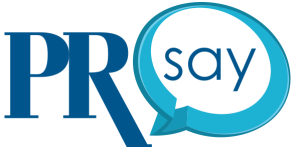Looking back at her 30 years of leading writing workshops for PRSA, “the one thing that remains the same is that there’s a human on the other end, the reader,” Ann Wylie said.
With business writing, “We’re trying to change people’s minds and change their behavior,” she said. Thirty years on, “I’m still teaching writing that sells products, services and ideas. Because that is what we do.”
Wylie, president of Wylie Communications in Kansas City, Mo., was the guest on Nov. 18 for the 50th episode of Strategies & Tactics Live, PRSA’s monthly livestream on LinkedIn. (Watch Ann Wylie share her writing wisdom.)
For three decades, she had led writing workshops and contributed columns and articles to PRSA. Her most recent piece, “Why Clarity Is Kindness,” appeared on the PRsay blog on Nov. 17.
John Elsasser, editor-in-chief of PRSA’s Strategies & Tactics publication and host of S&T Live, said strong writing captures the reader’s attention and holds it, whether in a social media post or internal communications.

“The more that we think about the reader and how we can help them, the more we help ourselves,” Wylie said. “I call it ‘selfish empathy.’ Because the more we relate to them, the more we sell them” products, services or ideas.
Wylie’s advice for business writers is to “Be kind to others, and treat others the way that you would like to be treated yourself. If you do that, then if you’re nice, you sell more. It’s good karma, and you get it back tomorrow.”
Skimmers and scanners
Communicators too often focus on their organization’s needs, “rather than [on] the reader’s pain point, which would make us so much more effective,” Wylie said. Remember that “We don’t have readers anymore. We have skimmers and scanners.”
As communications professionals, “we’re not paying enough attention to the reader’s pain points, we’re just trying to sell [something] or get that quote out that the VP wants, or make sure that the company name or the product name are in the first paragraph,” she said. “That’s not the right pain point, which is to think about” the reader’s needs.
When writing about survey results, for example, lead with its most fascinating findings, she said.
“Get excited about what the data is saying. Don’t be put off by the fact that the data is a number. Math is money. I like money, so I like math. Think about the people behind the numbers, and what the numbers mean. If you can’t figure it out, then you can ask ChatGPT to help you.”
Wylie called AI “a fantastic tool” for writers, but said it’s often used to write poor-quality emails. “What we should be doing with it instead is learning the pain points of our audience,” she said.
“I would love to just use AI to write all my stuff,” Wylie said, but so far, “it’s allowed me to do my work faster; it’s come up with ideas that I didn’t come up with. I’m all for it, all-in on it, and use it as a tool and a therapist every day. ChatGPT and I have a safe word. It’s gotten that far.”
Watch Ann Wylie tackle the S&T Live lightning round below:
Illustration credit: songwut







